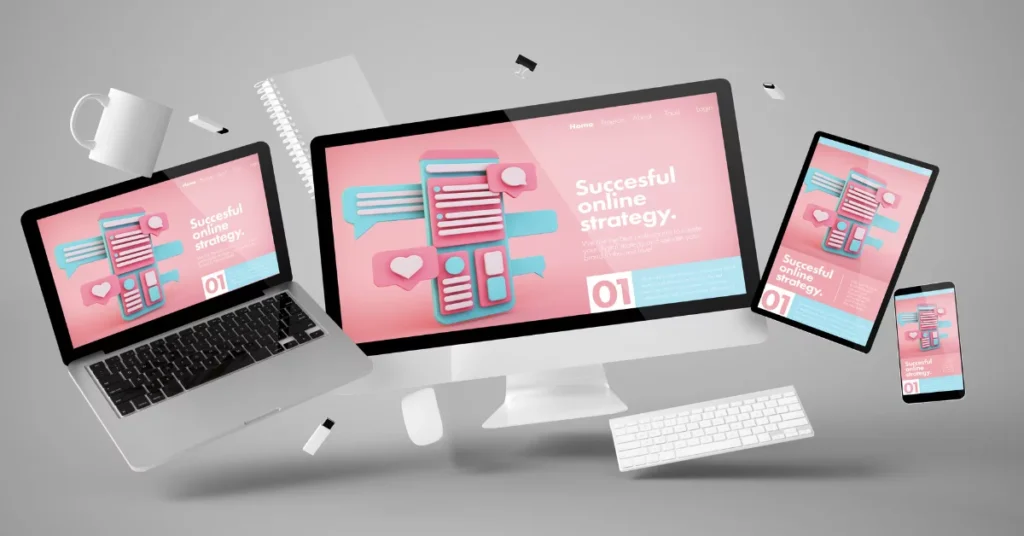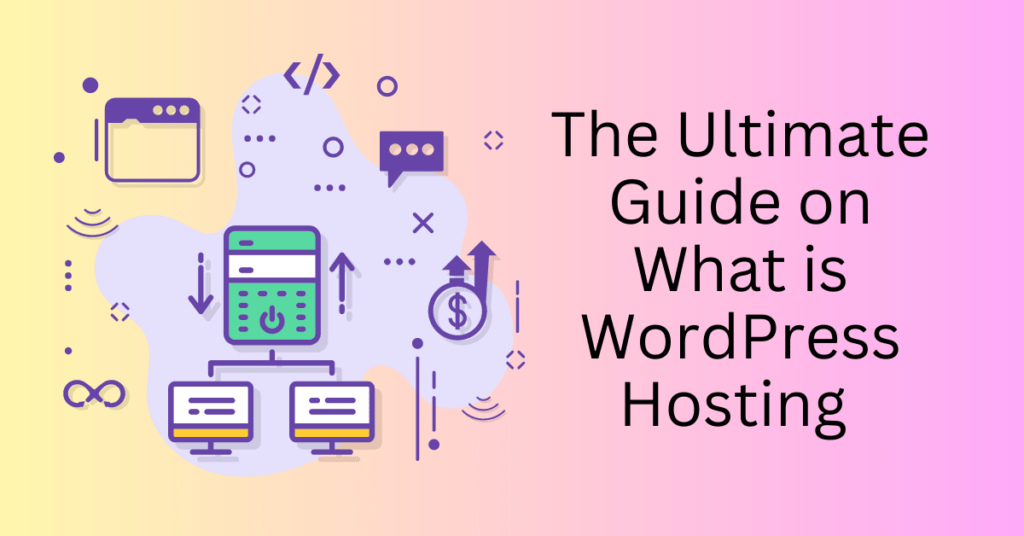A website is important for businesses to create an online presence. Having a good design will give you the advantage of getting more visitors and possibly taking action on your website. So, how to create a successful website?
User experience is one of the very important things for every business. If your website is not user-friendly or well-designed, people will have a bad impression of your business as well.
A website is your virtual identity online, your branding and most importantly your business card. A place where people get to know about your business. It’s also the first impression of your brand and services before deciding on whether they should continue doing business with you.
Your website is your business card. Potential clients get the first impression of your brand and services when they visit your website.
A website is not just to demonstrate what you are doing, but most importantly to help close deals and get more sales. If your website is not doing that, you better improve it or just close it to avoid any bad impressions brought by it.
Today, we will be sharing some fundamental design principles of a good website design.
What It Takes to Create a Successful Website?

A great website is a website that is simple to use and gets the information your visitors want.
You can have fancy designs on your website and have lots of animations and so on, but if all these will confuse your website visitors and not bring in sales for your business, it’s pointless.
Instead, the design should be easy to navigate, load quickly, look good, and be intuitive and consistent with your branding. All these are crucial factors for a good user experience.
This is also why marketers build different landing pages and web pages for different goals. Understanding that human tends to have a short attention span and need to be guided.
You want to create your website to help them to get what they want easily and to do what you want them to do. What you don’t want is for them to play around with your navigation menu and start browsing around, end up getting lost in your website and close the browser without taking any useful actions.
To make this happen, you need to consider these key factors when designing your website:
- What are your visitors looking for?
- What do you want them to do?
- How to convert them from a visitor to a lead?
While creating a website is easy nowadays, creating a good high-converting website may not be the case. There are many factors to consider in your website design to get good with it.
Read more on how to create a WordPress site from scratch.
8 Tips to Create a Successful Website
No matter if you have your website already, or are planning to launch a new one, it is important to know these few principles of good website design. It is the basis of creating a good website that your visitors will like.
They will help you create a website that is modern, intuitive, and easy to navigate.
1. Keep it Simple
The principle of simplicity is an integral part of any good website design. It is the key to both the readability and usability of your website.
Having the latest design and animation on your website may not be necessary good for it. Instead, if you are looking for the top businesses’ websites, they are very clean and neat. In fact, they are trying to reduce all unnecessary elements in order to simplify the process.
Don’t try to distract your visitors with fancy designs, keeping your website clean and easy to use is the key.
You can let your content shine when your site is simple and easy to navigate.
2. Brand Consistency to Create a Successful Website
When we talk about branding, not only it’s about the logo. But also the overall brand design. The colour and the design are equally important.
It is important for people to get used to your brand design. A simple idea would be when you think about Coca-Cola, the first impression will be red colour.
Design consistency across all your products and marketing channels are good to build trust and credibility with your target audience.
This is what we call visualization memory. People may not remember what you are selling, or what’s in your logo details. But when they see this design, instantly they know it’s your brand.
So, try sharing the same messaging tones and colours across all marketing channels to reinforce the brand image and convey professionalism.
3. Typography and readability
People are not going to spend time and effort reading your content if it’s not well presented. There are no obligations for them to do so. In fact, you are the one begging them to read your content. And hence, it’s your responsibility to make it presentable and readable.
That’s where you should choose a font that works well with your designs and contents. Try to avoid using fancy fonts or small font sizes on your website. Fancy may not work that well sometimes on a website.
Again, we should stress the importance of simplicity here. A basic font will work as well.
It is useful that you avoid long sentences and long paragraphs to make it easier to read. Also, separate your website with different sections and all the different titles and headers shall have their own font size and thickness to make them easy to be identified.
Remember this, people may not read every single word on your website, they will most likely scan through the content and read the title/headings only to see anything interesting in it.
For example, you can use different tagging like H1-H6 to identify the importance of each heading and at the same time, break each section into smaller sizes to help your reader read it better. But you should always test it on various browsers and devices to make sure it works on all device types.
4. Responsive and mobile friendly
A mobile responsiveness design is a must for your website. It’s not an option anymore. People are using mobile and tablets more than a laptop or desktops nowadays. If you don’t trust me, try and see the data for your website.

In most cases, over 60% of visitors are on mobile. Hence, it is important for your website to be user-friendly and responsive for different devices.
If after waiting for a few seconds and your website does not load nicely, they will definitely close it for good. No exception to this. Users don’t care to visit your website if they cannot read well.
There are more other websites out there that can provide similar information for them. With some even better than yours.
You need to understand this very well. Your visitors are impatience. They want things to load fast and be easy to read on their devices. That’s the norm. And it is your responsibility to make sure that happens.
You can do this by using a responsive design that adjusts the layout according to the viewing device, such as a computer, tablet, or mobile phone.
5. Colour combinations
There are so many different colours you can use in your website design. If you are just using black and white with one colour, it’s maybe easy to match. But if you are having multiple colours, try to limit them to not confuse your visitors.
You should keep the palette simple and use only three to five colours in your design.
You don’t want to use too many images in your design either.
Images and videos are important to add visuals to your website, but having too many images, especially images that are not related to your content.
When designing a website, it’s essential to consider the visual style and tone of the design. At the same time, you also need to keep the design simple and clean so it’s easy to navigate.
You don’t have to use a complex design with many details, images, and elements on your website. A simple, clean, and modern design that’s easy to navigate is all you need.
6. Fast loading
Ideally, keep your website loading time below 2s for the best conversion rate. And the worse case, it should not be over 5s. This is when people will decide whether to stay or leave your website.
No matter how good or bad your website design is, it does not matter if people don’t get to see it. What’s worse is every page they click, it takes a long time for it to load. They will end up wasting their time waiting for your website to load.
This will leave a very bad impression on them and also not able to present to them what you have prepared on your website.
To check your website performance, you can use the free Pagespeed Insight tool by Google.
In most cases, you will only have a chance only to impress and convert your customers. If you lose the first chance, most probably you are not going to get the second chance.
7. Easy to navigate
You want people to get what they want on your website. Not to get lost on your website. Time is precious, and their attention span is short.
You need to bring them straight to the point. If you are making them click and navigate to 10 pages to get what they want. Or to complete the checkout process, your conversion rate will be very low. Not many people will be able to complete the entire journey.
Ideally, you want to simplify the process, especially your sales process. You want to remove every single obstacle blocking them from buying your products or services. And let them complete the checkout as soon as possible.
You can do this in several ways. It can be a clear navigation menu or a navigation bar to guide them to the information they want. Or you can create a series of pages that are linked one by one to reach the goal you want. And we call this a sales process funnel.
8. Communication
Your website needs to interact with your audiences to convey your messages. Your design should be designed to communicate effectively so your potential clients can get what they want easily.
At the same time, you need to ensure that your visual designs are easy to navigate while also being quick to load.
Final Thoughts – How to Create a Successful Website
Creating a website is easy, with the website builder available out there. One can create a website in no time. However, not every website will be successful. Some will and some might not. This is because to create a successful website, there are some tweaks that you need to do. And the most important thing is you need to know your target audiences.
Understand their behaviour and interest, then only you are able to create a good website that resonates with them.


